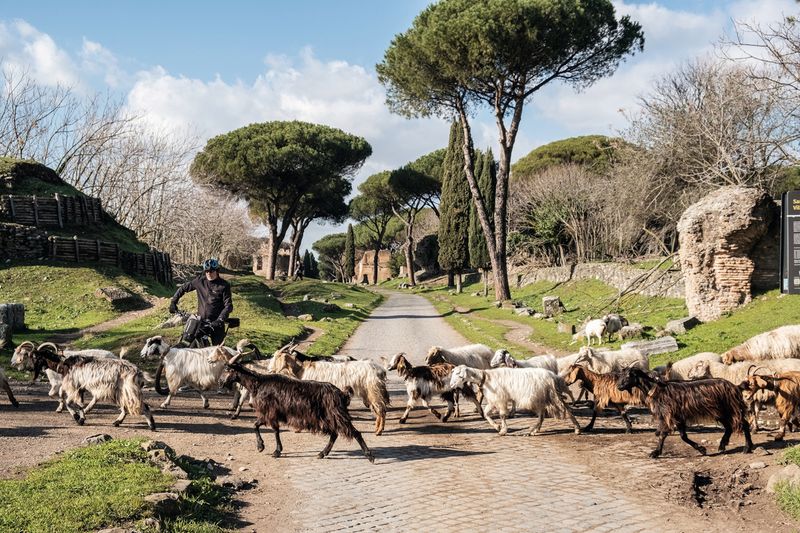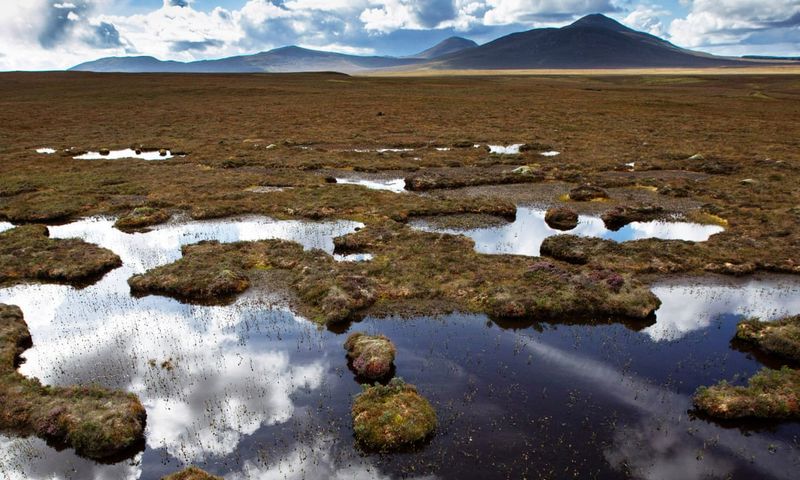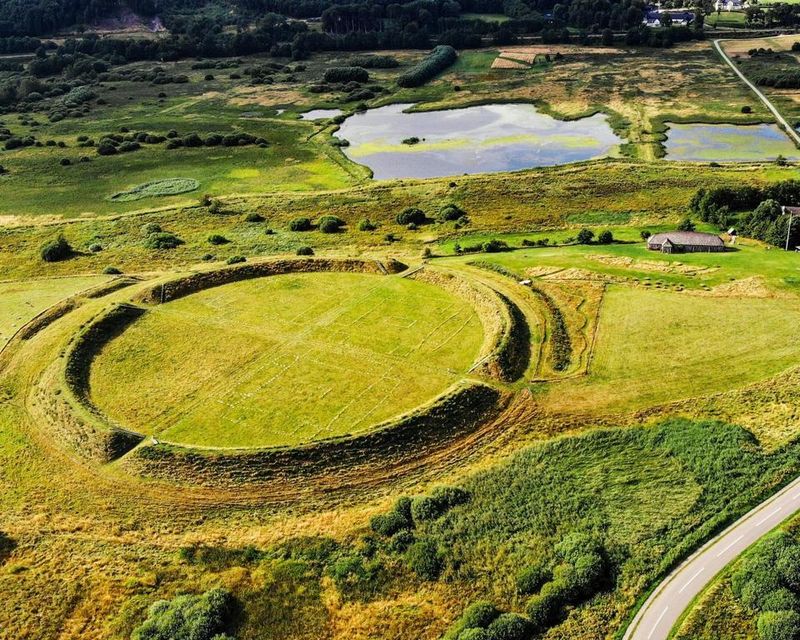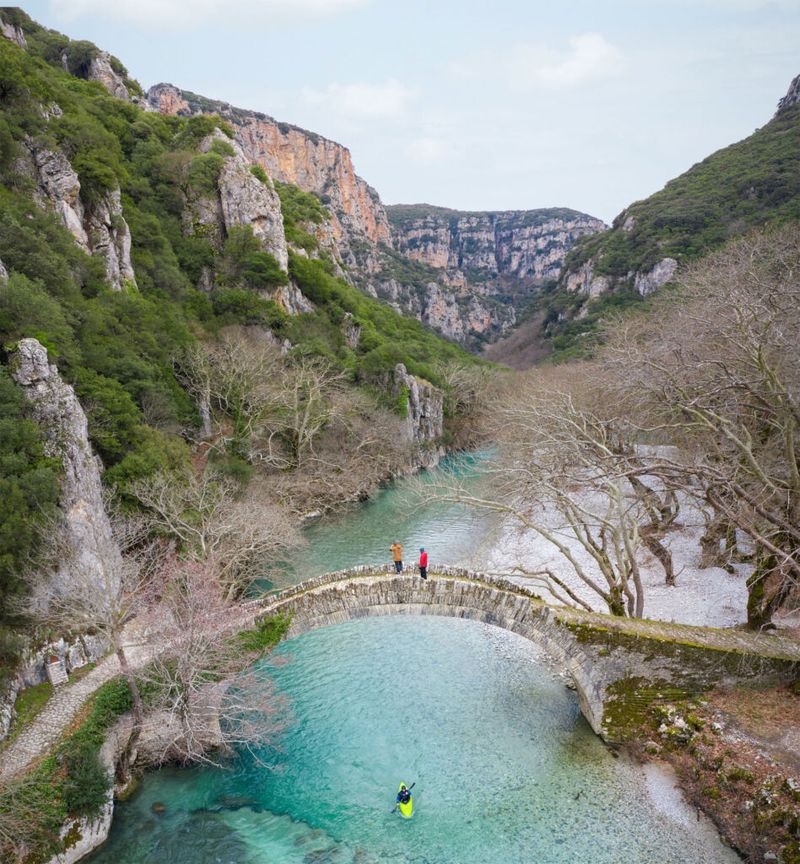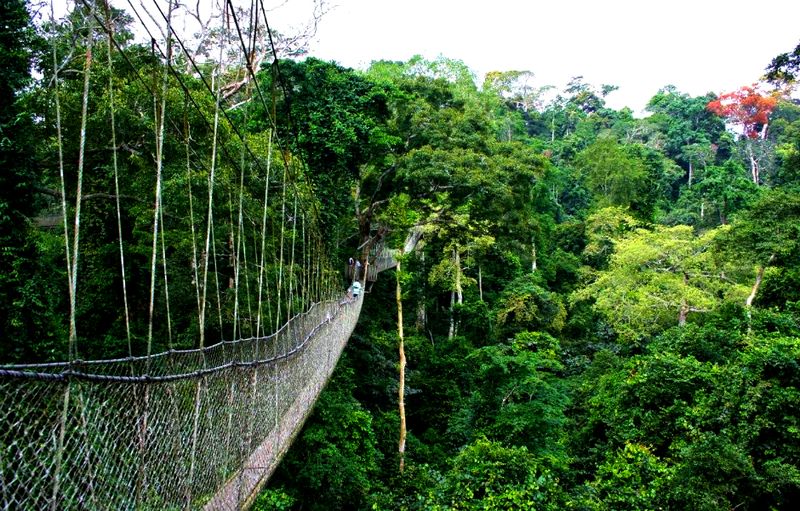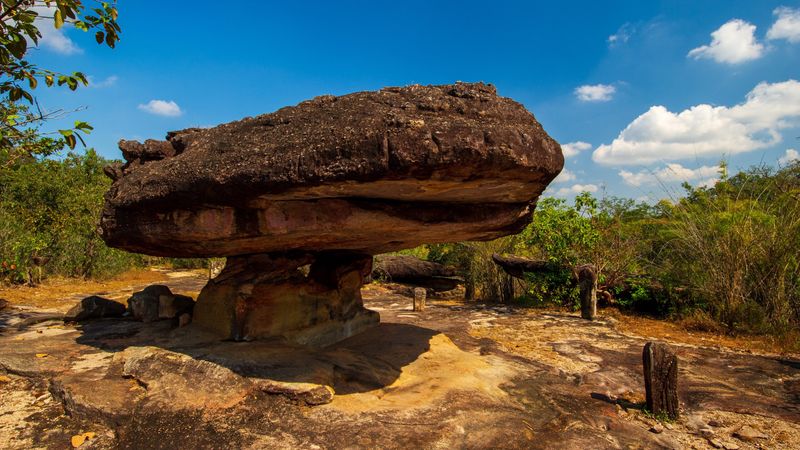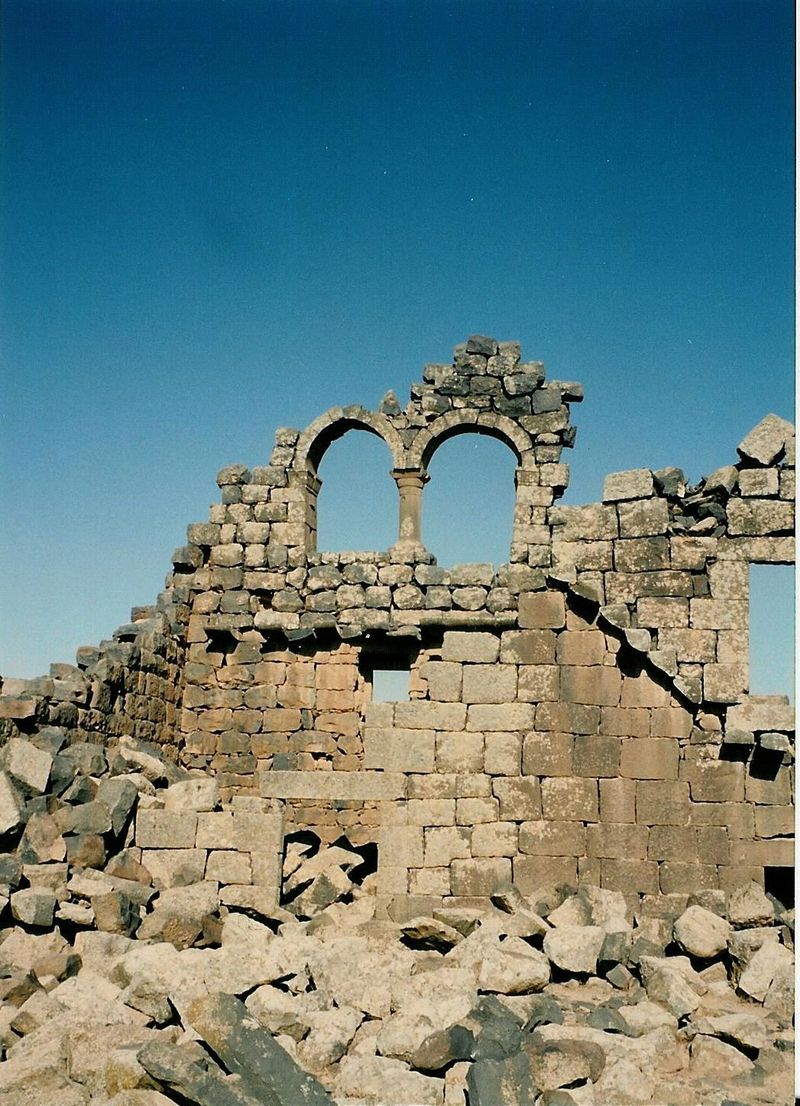UNESCO just added some incredible new places to its World Heritage List, and most travelers have never even heard of them yet. These spots range from ancient roads and mysterious stone circles to rainforests and stunning landscapes that look like they belong on another planet. Getting there now means you can explore without the crowds, snap photos in peace, and experience these treasures before they become tourist hotspots.
1. Via Appia (Italy)
Romans called it the Queen of Roads for good reason. This engineering marvel stretches over 800 kilometers from Rome all the way to Brindisi on Italy’s heel, and you can still walk or bike sections of the original cobblestones today.
Start at Parco dell’Appia Antica just outside Rome, where the path feels almost magical with ancient tombs and pine trees creating natural shade. For a truly quiet experience, venture south to lesser-known stretches near Terracina or Venosa, where locals still use parts of the road.
Early mornings between October and May offer the best light for photography and fewer visitors, letting you imagine Roman legions marching these very stones two thousand years ago.
2. The Flow Country (Scotland, UK)
Standing in the middle of an endless sea of spongy ground, dotted with mirror-like pools and watched over by massive skies, that is exactly what The Flow Country feels like.
This became the planet’s first peatland World Heritage Site in July 2024, protecting thousands of acres of blanket bogs in Caithness and Sutherland. Wooden boardwalks let you explore without sinking into the soggy ground, and if you are lucky, you might spot golden eagles or hen harriers circling above.
The dreaded Scottish midges can ruin a visit in summer, so aim for April through May or September through October when the air is crisp and the bugs stay away.
3. Viking-Age Ring Fortresses (Denmark)
Five perfect circles etched into Danish soil tell the story of Viking military genius. Built between 970 and 980 CE, these ring fortresses at Aggersborg, Fyrkat, Nonnebakken, Trelleborg, and Borgring show just how organized and advanced Viking society really was.
Each fortress follows an identical geometric plan with stunning precision, something that still amazes engineers today. You can base yourself in Aalborg or Slagelse and easily day-trip to multiple sites, walking the grassy ramparts where warriors once stood guard.
Mornings bring a peaceful stillness to these ancient grounds, with dew on the grass and hardly another soul around to break the spell of stepping back eleven centuries.
4. Maison Carrée of Nîmes (France)
Picture a Roman temple so perfectly preserved that it looks like it could have been built yesterday instead of 2,000 years ago. Maison Carrée stands proud in the heart of Nîmes, its columns and proportions still inspiring architects worldwide.
Added to the UNESCO list in 2023, this gem deserves your first hour in Nîmes. Arrive right when it opens to appreciate the morning light on those honey-colored limestone columns, then cross the square to the ultra-modern Carré d’Art museum for a jaw-dropping contrast of ancient and contemporary.
Spring months of March and April or autumn’s October and November bring comfortable temperatures and thinner crowds, making it easier to truly absorb the temple’s timeless beauty.
5. Zagori Cultural Landscape (Greece)
Tucked into the mountains of Epirus, Zagori feels like Greece’s best-kept secret. Forty-six stone villages connected by ancient pathways and graceful arched bridges create a landscape that time forgot.
These bridges, built without mortar by master craftsmen centuries ago, still span rushing rivers and deep ravines with elegant curves. Base yourself in the mountain hamlets of Papigo or Kipi, where stone houses with slate roofs line narrow cobbled lanes.
Sunrise walks to the bridges reward early risers with absolute solitude and golden light painting the stone a warm amber. May through June or September through October offer perfect hiking weather, wildflowers, and villages that feel authentically lived-in rather than turned into tourist museums.
6. Nyungwe National Park (Rwanda)
One of Africa’s oldest rainforests cloaks the mountains of southwestern Rwanda in a thick green blanket that hides chimpanzees, colobus monkeys, and over 300 bird species. Nyungwe earned its UNESCO status in 2023, finally getting global recognition for its incredible biodiversity.
The canopy walkway suspended 50 meters above the forest floor offers views that make your heart race, both from the height and the beauty. Chimp tracking requires an early start and some stamina, but hearing their calls echo through the ancient trees makes every steep climb worthwhile.
Book your trek for a weekday when permits are easier to snag. June and July hit the sweet spot after the long rains, with trails dry enough for comfortable hiking.
7. Djerba, Island Settlement Pattern (Tunisia)
An island where mosques, synagogues, and villages have coexisted peacefully for centuries sounds almost too good to be true. Yet Djerba proves it is possible, with its unique low-density settlement pattern earning UNESCO recognition in 2023.
Whitewashed houses dot the landscape instead of clustering into dense towns, creating a dreamy patchwork of buildings, gardens, and palm groves. The El Ghriba synagogue, one of the oldest in the world, stands as a powerful symbol of religious tolerance.
Stay in the artistic village of Erriadh, where street murals add splashes of color to traditional walls. Wandering the quiet lanes at dawn, before the day heats up, feels like having the whole island to yourself. Late October through November brings pleasant temperatures and harvest season charm.
8. Cultural Landscape of Old Tea Forests of Jingmai Mountain (China)
Tea has been growing on Jingmai Mountain for over a thousand years, not in neat plantations but as part of the living forest itself. The Blang and Dai people have perfected this sustainable approach, creating a landscape that is both productive and wild.
Walking through these old-growth tea forests feels different from visiting typical tea plantations. Massive tea trees tower overhead, their gnarled trunks wrapped in moss, while birds and insects create a constant soundtrack.
Spring flush in April and May is when the best leaves emerge and the whole mountain comes alive with pickers. October after harvest offers cooler weather and a more relaxed pace. Village guesthouses let you wake up surrounded by tea trees and learn picking techniques from families who have done this for generations.
9. Gaya Tumuli (Republic of Korea)
Seven clusters of grass-covered burial mounds rise from the Korean landscape like gentle green waves frozen in time. These tumuli hold the remains of Gaya Confederacy rulers who governed this region from the first to sixth centuries CE.
Unlike their more famous neighbors in Goguryeo, Baekje, and Silla, the Gaya kingdoms left fewer written records, making these burial sites crucial for understanding their sophisticated culture. Inside, archaeologists have found iron armor, gold crowns, and pottery that reveal surprising connections to Japan and other distant lands.
Base yourself in Gimhae or Goryeong for easy access to multiple sites. The Daeseong-dong and Jisan-dong mound groups are especially peaceful in early morning, when mist sometimes clings to the grass and you can walk among ancient royalty in complete quiet.
10. Deer Stone Monuments & Related Bronze Age Sites (Mongolia)
Scattered across the vast Mongolian steppe, mysterious standing stones rise from the grasslands covered in stylized deer that seem to leap upward toward the sky. These deer stones, carved around 1200 to 600 BCE, mark some of the most important Bronze Age sites in Central Asia.
Nobody knows exactly why ancient herders carved these beautiful images or what ceremonies happened around them, but their artistry and astronomical alignments suggest deep spiritual significance. Some stones stand alone in the emptiness, while others cluster near burial mounds and ritual sites.
You will need a local guide to find the best examples scattered across remote areas. June through September offers the most reliable weather, with endless summer daylight giving you golden hours that stretch almost until midnight for incredible photography.
11. Royal Court of Tiébélé (Burkina Faso)
Walls become canvases in Tiébélé, where Kasena women transform mud-brick buildings into stunning works of art. Geometric patterns and symbolic designs cover every surface in black, white, and red, creating an architectural tradition unlike anywhere else on Earth.
The Royal Court, home to the local chief, showcases the finest examples of this craft. Each design carries meaning, telling stories of family, protection, and connection to ancestors.
Community guides will walk you through the compound, explaining the symbolism and often introducing you to the artists themselves. Photography is usually welcomed with respectful permission. Visit during the dry season from November through February when temperatures are most comfortable and you can watch women renewing the paintings, a skill passed down through countless generations of Kasena families in this remarkable place.
12. The Historic Town & Archaeological Site of Gedi (Kenya)
A medieval Swahili city lies hidden in coastal forest, its stone walls and elegant archways slowly being reclaimed by nature. Gedi thrived from the 10th to 17th centuries, then mysteriously emptied, leaving behind mosques, palaces, and houses that whisper of a sophisticated trading culture.
Walking through the ruins feels like exploring a lost civilization. Baobab trees push through ancient walls, and monkeys chatter in the canopy overhead, adding to the Indiana Jones atmosphere.
Archaeological finds of Chinese porcelain and Venetian glass prove Gedi connected to a vast Indian Ocean trade network. Base yourself in nearby Watamu or Malindi and arrive right when the gates open. Early morning visits mean you will likely have these haunting ruins almost entirely to yourself, with only bird calls and rustling leaves for company.
13. Phu Phrabat (Thailand)
Mushroom-shaped rocks balance impossibly on narrow stems, creating a landscape that looks straight out of a fantasy novel. Phu Phrabat combines this weird geology with prehistoric rock art and the world’s largest collection of in-situ Sima stones from the Dvaravati period.
These carved boundary markers once defined sacred Buddhist spaces over a thousand years ago, and seeing them still standing in their original positions is genuinely rare. Ancient artists painted the rock shelters with handprints and mysterious figures that archaeologists are still working to understand.
Base yourself in Udon Thani city and make the short drive to the park. Arriving right at 8 a.m. when gates open lets you explore in relative cool before the midday heat and tour buses arrive, giving you time to appreciate both the natural wonders and human history in peace.
14. Umm al-Jimal (Jordan)
Built entirely from dark basalt stone, Umm al-Jimal looks like it was carved from shadows. This Byzantine and Early Islamic town thrived in a harsh desert environment thanks to ingenious water-harvesting systems that collected every precious drop of rain.
The black stone absorbs heat during the day and radiates it at night, creating natural climate control that kept residents comfortable year-round. Walking through doorways and along streets worn smooth by centuries of footsteps connects you directly to people who made this seemingly inhospitable place home.
Combine your visit with nearby Jerash for a full dose of Jordan’s Roman and Byzantine heritage. Sunset transforms the black ruins into something magical, with golden light creating dramatic contrasts against the dark stone. October through April brings the most pleasant weather for exploration without melting in desert heat.
15. Lençóis Maranhenses National Park (Brazil)
A desert with lagoons sounds impossible, but Lençóis Maranhenses makes the impossible real. Massive white sand dunes stretch for miles, and during rainy season, valleys between dunes fill with crystal-clear freshwater, creating thousands of turquoise pools.
This brand-new UNESCO site from 2024 offers one of the planet’s most surreal landscapes. Fish somehow appear in the seasonal lagoons, swimming until the water evaporates, then surviving underground until rains return.
June through September is prime time when lagoons are fullest and most beautiful. Stay in the gateway towns of Barreirinhas or the laid-back beach village of Atins for the best access. Wake up early and hike out to a lagoon before anyone else arrives, then float in bathwater-warm freshwater surrounded by pristine white dunes that glow in the morning sun.

